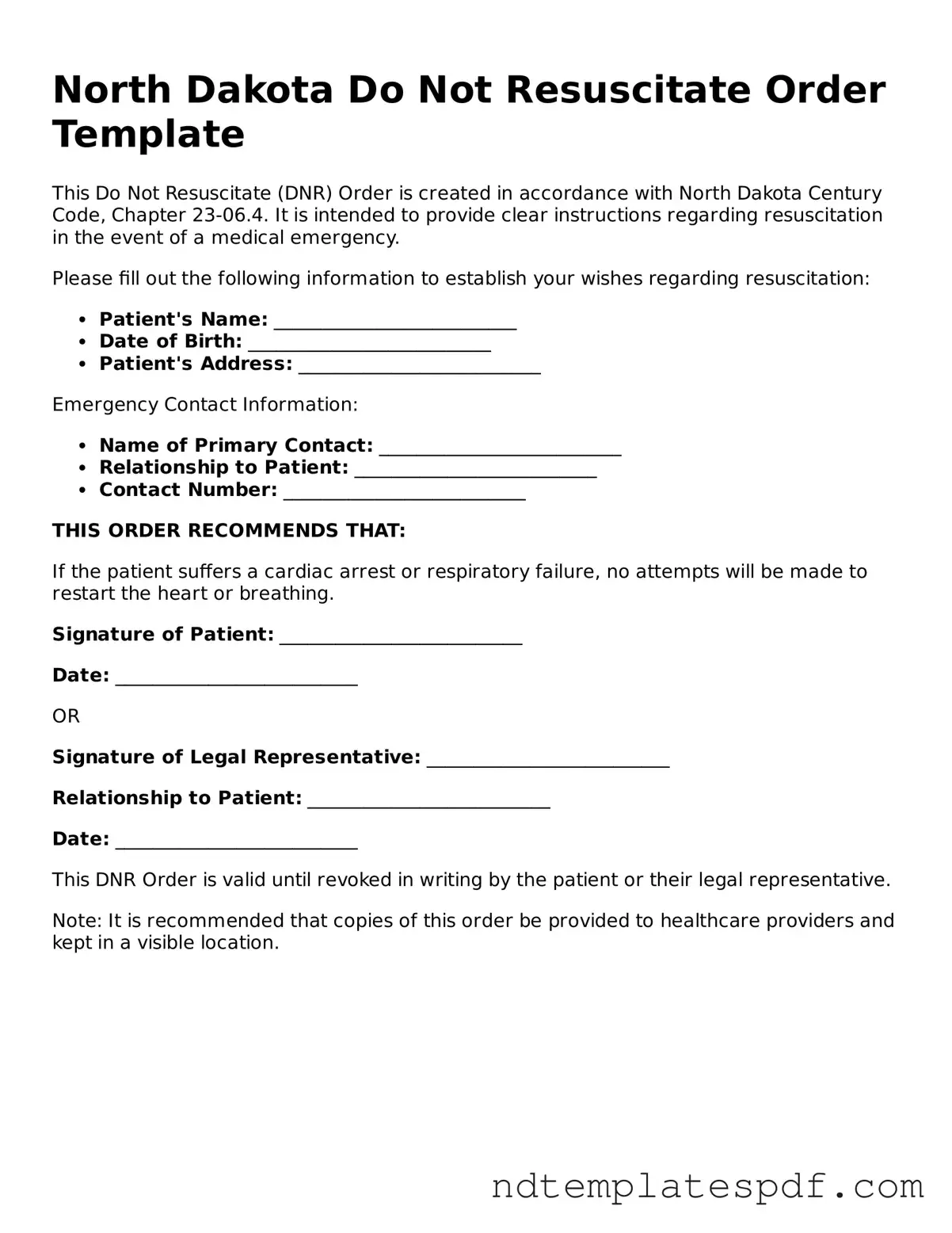Legal North Dakota Do Not Resuscitate Order Document
A Do Not Resuscitate (DNR) Order form in North Dakota is a legal document that allows individuals to express their wishes regarding resuscitation efforts in the event of a medical emergency. This form is designed to ensure that a person's preferences are respected, particularly when they are unable to communicate their desires. Understanding the significance of a DNR Order can help individuals and families make informed decisions about end-of-life care.
Fill Out Document Now
